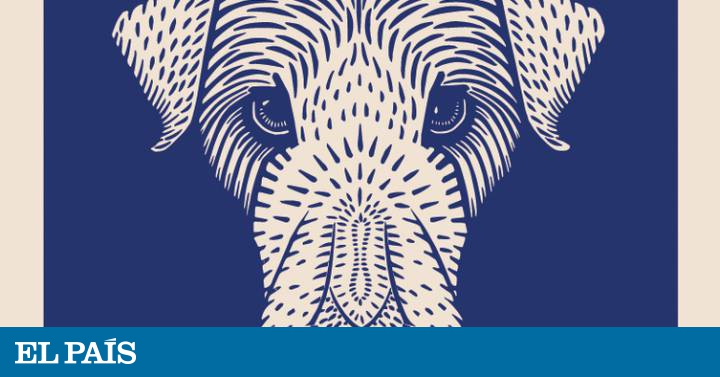One of the most visited monuments in Tokyo is the statue of a dog, Hachiko, which has become a national symbol. Located at the exit of the Shibuya subway, a mammoth station next to the world's busiest zebra crossing, the sculpture is a place to stay or take pictures. In fact, you usually have to wait a long line before you can take a picture with this dog, of the indigenous breed Akita Inu. The “faithful Hachiko dog” went to look for her master every day at the station and, when she died, she continued to do so for ten years, in a show of loyalty revered as a sign of fidelity to the essences of the country. In fact, the statue was unveiled in 1934, with the dog still alive and present at the ceremony.
Although Japanese culture, especially thanks to the success of Natsume Soseki's classic novel I am a cat , has been identified many times with cats, dogs enjoy considerable cultural prominence, with enormous symbolic power as evidenced by the constant bustle in around Hachiko. The Satori publishing house has just published an anthology of doggy tales, extended, translated and annotated by Iván Díaz Sancho and María Lucía Correa Ortiz, The Japan of Dogs , which is not only a literary delight, but also an interesting immersion in Japanese culture . The dogs that appear in these stories almost always rise up as a metaphor for Japanese historical development, but also as an effective representation of the power of nature and the country's unresolved social tensions.
The tradition of canine literature goes back to classical fables and medieval narratives. It has one of its greatest exponents in Miguel de Cervantes and its Colloquium of Dogs , one of the exemplary novels of which there is a beautiful edition illustrated in Gredos by the painter Sofía Gandarias. Many narrators have written wonderful books starring dogs, from Jack London with his Call of the Wild or White Fang , to Manuel Mujica Láinez with Cecil - a kind of autobiography by the author of Bomarzo narrated by his dog - or Virginia Wolf in Flush , a novel in which he uses a coker spaniel to describe Victorian London. The last to join this millennial tradition has been Arturo Pérez-Reverte with Los hard dogs do not dance.
In some cases, literature uses dogs as a metaphor to try to describe the world of humans — the oldest and most classic example are the cynics of Diogenes, who considered that we should return to the natural order and for that reason they called themselves “the dog sect ”-. Other authors, on the other hand, want to get into the heads of animals, imagining the thoughts behind their intelligent and inquisitive gazes. The stories collected in The Japan of Dogs are framed within these two traditions, with some literary summits such as a shocking and violent tale, unpublished in Spanish, by the Nobel Prize winner Kenzaburo Oé, in which the story of some young people who are commissioned Killing dogs becomes a powerful reminder of violence in a society that has not recovered from the traumas of its past.
The brutal tale of the Nobel laureate Kenzaburo Oé is a reminder of the violence that has survived in the land of the rising sun
The 11 stories collected in the book cover almost two centuries of Japanese literature and follow the history of a country that went from being totally isolated from the world to becoming a cruel imperial power, to end up being destroyed during the Second World War. Japan rose from the ashes, transformed into a democracy and an economic power, in which the weight of tradition is both an inescapable social reference and a slab that anchors many customs in the past. All this can be glimpsed in the stories that make up this volume, which, as those responsible for the edition point out, does not offer an idealized vision of the country, but rather the opposite.
The youngest writer in the anthology, Yukiko Motoya, 41, offers a disturbing story, effectively alien to any idealization, which summarizes two of the book's great themes: a nature that is always encircled as a threat, in a country that He has suffered numerous destructive earthquakes, compatible with a respectful closeness to the natural world, which among other things translates into an obsession with pets. As Professor Florentino Rodao, author of the book The Loneliness of the Vulnerable Country (Criticism), explains , “In 2003, domestic animals began to outnumber the number of young people under the age of 15, and in addition to meeting some of the affection needs formerly played by families also satisfy the consumer ”.
The reading of this volume can be completed with two wonderful manga by Takashi Murakami, the sad dog in love with the stars and the happy and fun Kota, come! , as well as with the classic Land of Dreams , by the great Jiro Taniguchi, all three edited by Ponent Mon. They narrate, from very different angles, the relationships of different families with their dogs and serve to x-ray a society that channels hidden emotions through the dogs. Like The Japan of Dogs , they demonstrate that a country, with all its contradictions, nuances and backpacks of the past, can be related through its most human animals.
Japan from dogs. Various authors. Translation by Iván Díaz Sancho and María Lucía Correa Ortiz. Satori, 2020. 208 pages. 18 euros.









